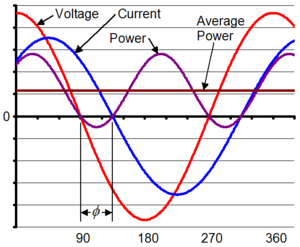Thanks for all the responses, I've learned quite a bit in this thread!
But all this talk about the benefits of a 3-phase setup begs the question: Why use single-phase at all? Why is it prevalent in American households - is it simply a case of "That's what America started with way back when, and we just never got around to changing the circuitry in tens of millions of homes over to 3-phase"?
The power requirements are quite small, so no need to run three phases. Also, built into the setup, like Reg mentioned, is the fact that the transformer is center tapped.
By center tapped, instead of having a winding with the bottom of the winding being 0 volts, the center being 120 volts, and the top being 240, there is a good reason to make it -120 at the bottom, 0 at the center, and 120 at the top. Therefore, you cannot touch a single line with your hand and take a 240V jolt, only a 120 volt jolt.
240 results from the two lines, 120 and -120 being 180 degrees out of phase. So, you can have 240, but only take a single line shock of 120.
Obviously, we have AC because it can be transformed with transformers. DC cannot be transformed, so it is not that good to have as a carrier of large power over long distances.
Single phase is still a good idea, and I doubt very seriously if we started all over from scratch if we would do it any differently.
One of the gentleman used the water analogy. I like that analogy, and use it often, and it can aid in the understanding of hydraulics. But, remember, that analogy does not account for the current flowing backwards and forwards 60 times a second. Usually, for many practical things, this can be forgotten. But in a different post, someone mentioned inferiority of single phase due to the "common." This is a case where the water analogy breaks down. That common might as well be the hot wire, since from a motors perspective, current flows in, reverses, and flows out again. The motor does not know the difference. The real crux of the matter is what I said...rotating magnetic field vs two equal an opposite magnetic fields for single phase. Look at a shaded pole motor, and you will see the simplest way of accounting for that.


